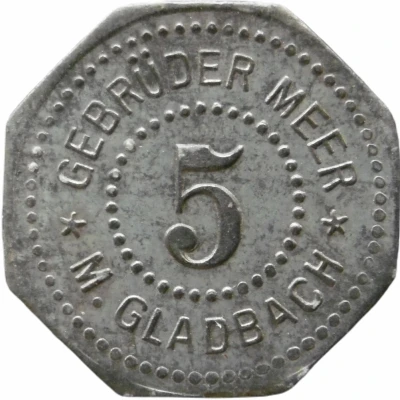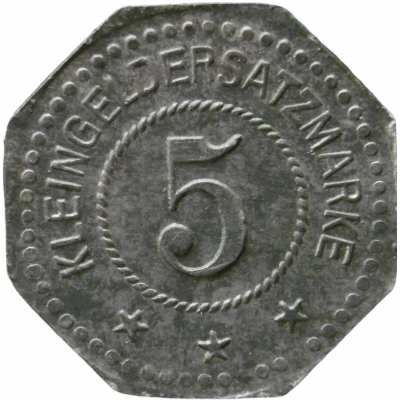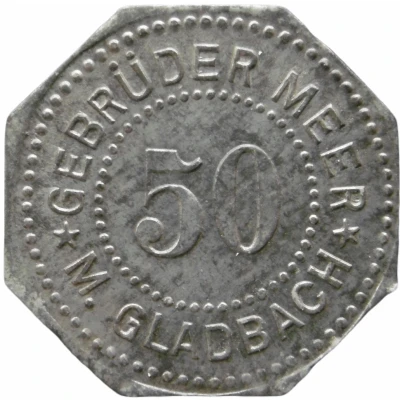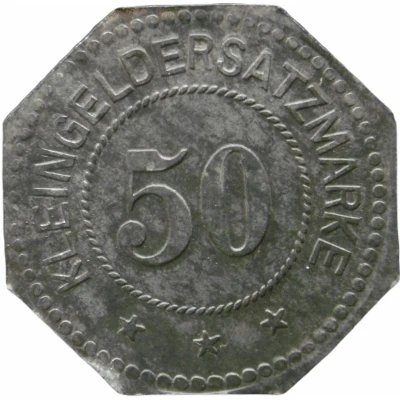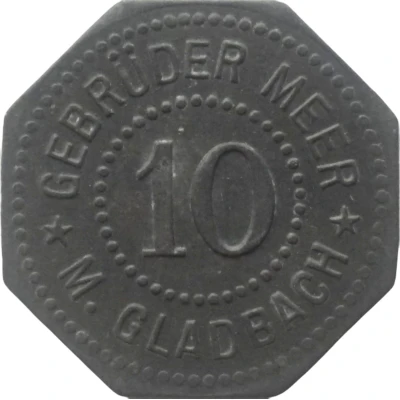
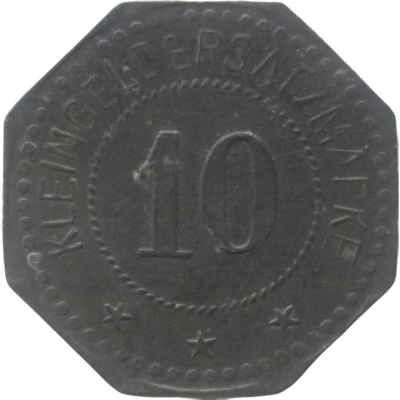

© Willem63 (CC BY-NC-SA)
10 Pfennigs - Mönchengladbach (Gebrüder Meer) ND
| Zinc | 2.2 g | 20.8 mm |
| Issuer | City of Mönchengladbach (Prussian province of Rhine) |
|---|---|
| Type | Standard circulation coin |
| Value | 10 Pfennigs (10 Pfennige) (0.10) |
| Currency | Mark (1914-1924) |
| Composition | Zinc |
| Weight | 2.2 g |
| Diameter | 20.8 mm |
| Thickness | 1.2 mm |
| Shape | Octagonal (8-sided) |
| Technique | Milled |
| Orientation | Medal alignment ↑↑ |
| Demonetized | Yes |
| Updated | 2024-10-04 |
| Numista | N#348483 |
|---|---|
| Rarity index | 97% |
Reverse
Pearl rim, legend surrounding beaded circle with denomination centered
Script: Latin
Lettering:
KLEINGELDERSATZMARKE
10
★ ★ ★
Edge
Plain
Comment
Menzl: BBBFa: Maschinenfabrik
On December 10, 1872, the brothers Michael and Peter Meer founded in Mönchengladbach the “Gebr. Meer Maschinenfabrik und Eisengiesserei o.H. ". They manufactured steam engines and primarily supplied the strong textile industry on the Lower Rhine.
Interesting fact
The 10 Pfennigs - Mönchengladbach (Gebrüder Meer) ND coin was minted during a time of economic turmoil in Germany, specifically during the hyperinflation period of the 1920s. At that time, the value of the German mark was rapidly decreasing, and the government was forced to print more and more money to keep up with the increasing prices. As a result, many Germans turned to alternative forms of currency, such as local Notgeld (emergency money) and foreign currencies. The 10 Pfennigs - Mönchengladbach (Gebrüder Meer) ND coin, being made of zinc and having a relatively low denomination, was likely used as a substitute for the rapidly devaluing German mark.
